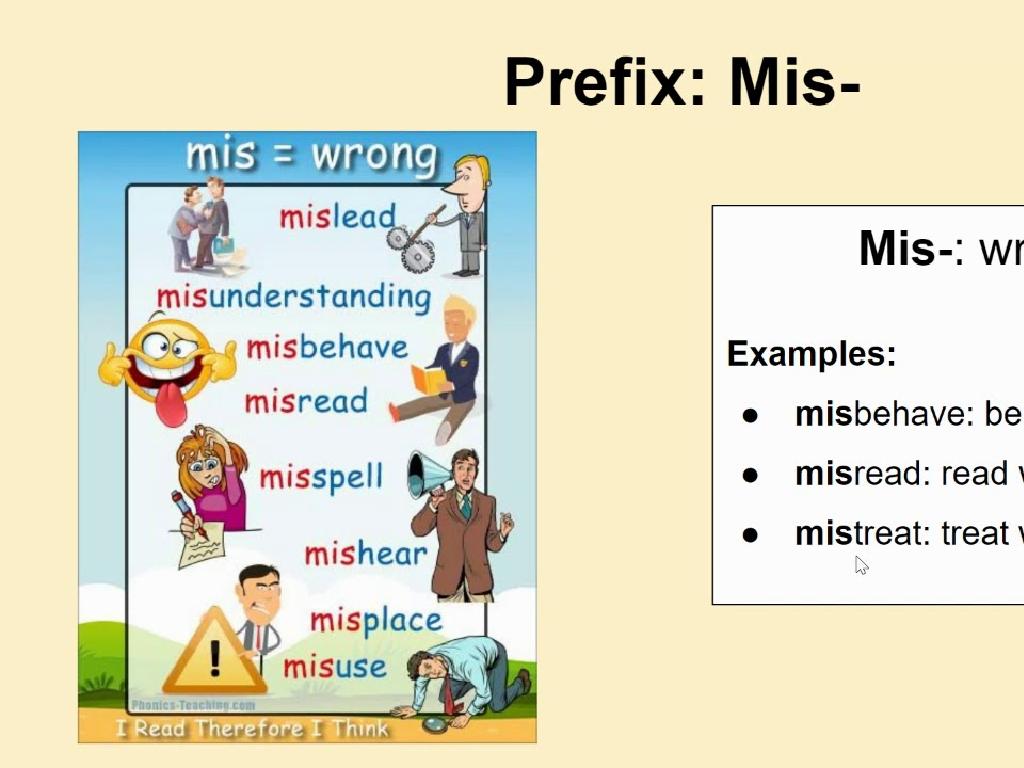Period 6: 1865-1898
Subject: Arts and humanities
Grade: High school
Topic: Ap /College Us History
Please LOG IN to download the presentation. Access is available to registered users only.
View More Content
Exploring Period 6: 1865-1898
– Post-Civil War transformation
– Reconstruction era and its impact on society
– Key events from 1865-1898
– Industrialization, Westward expansion, and the Gilded Age
– Social changes in this era
– Shifts in social structures, roles, and movements
– Political and economic shifts
– Changes in governance and the rise of America as an economic power
|
This slide introduces students to the significant period of American history from 1865 to 1898, a time of profound change following the Civil War. It covers the Reconstruction era, the transformation of the American economy through industrialization, the social upheavals including the fight for civil rights, and the political landscape that set the stage for the 20th century. Students should understand the interconnectedness of these changes and how they collectively shaped the modern United States. Encourage students to think critically about how these events are interrelated and to consider the long-term impacts on American society.
The Reconstruction Era: Reshaping America
– Define the Reconstruction Era
– Post-Civil War period (1865-1877) aimed at rebuilding the United States
– Amendments: 13th, 14th, 15th
– Abolition of slavery, citizenship rights, and voting rights for African Americans
– Challenges faced during Reconstruction
– Resistance, economic strife, and political turmoil
– Successes of the Reconstruction
– Legal advances, reunification, and educational progress
|
The Reconstruction Era was a pivotal period in American history, following the end of the Civil War, from 1865 to 1877. This slide covers the definition and time frame of the era, the significant constitutional amendments passed, and the various challenges and successes that characterized the period. The 13th Amendment abolished slavery, the 14th Amendment granted citizenship rights to all born or naturalized in the U.S., and the 15th Amendment aimed to protect the voting rights of African American men. Students should understand the complexities of the era, including the resistance from the South, the economic challenges, and the political struggles that ensued. Despite these, there were notable successes, such as the reunification of the nation, the establishment of the Freedmen’s Bureau, and the significant strides made in public education for African Americans.
The Gilded Age: 1865-1898
– Origin of ‘Gilded Age’
– Coined by Twain to depict superficial glitter of the era over deep problems
– Economic growth & industrialization
– Expansion of factories, railroads, and technological innovations
– Wealth disparity issues
– The rich got richer while the poor faced harsh conditions
– Rise of ‘Robber Barons’
– Powerful industrialists who amassed wealth, often through exploitative means
|
The term ‘Gilded Age’ was popularized by Mark Twain to describe the post-Civil War era as one of great wealth that masked the social problems beneath. This period saw rapid economic growth and industrialization, with significant advancements in technology and infrastructure. However, it also led to a stark wealth disparity, with a small elite becoming extremely wealthy, while the majority of the population lived in poverty. The ‘Robber Barons’ were industrial leaders whose fortunes came at the expense of the working class. Discuss the impact of these industrialists on the economy and society, and explore the ethical implications of their business practices. This slide sets the stage for a deeper discussion on the complexities of economic growth and its societal consequences during this transformative period in American history.
Westward Expansion: 1865-1898
– Homestead Act’s role
– Provided 160 acres of public land to settlers, spurring westward migration
– Native American displacement
– Forced relocation of Native Americans to reservations, loss of traditional lands
– Indian Wars
– Series of conflicts between U.S. forces and Native Americans, including the Battle of Little Bighorn
– Expansion’s cultural impact
– Introduction of new cultural elements and significant environmental changes due to settlement
|
This slide examines the profound effects of westward expansion in the United States during the period of 1865-1898. The Homestead Act played a pivotal role in encouraging Americans to move west by offering land for farming. This movement, however, came at a great cost to Native American populations, who faced displacement and the loss of their ancestral lands. The Indian Wars, a series of violent conflicts, were a direct result of this displacement. Additionally, the westward expansion brought about significant cultural shifts and environmental changes, as settlers introduced new practices and altered the landscape. Discuss the long-term consequences of these events, including the cultural assimilation of Native Americans and the transformation of the American West.
Immigration and Urbanization (1865-1898)
– New immigrant waves’ impact
– Immigrants from Southern and Eastern Europe brought diverse cultures, influencing American society.
– Urban growth and challenges
– Cities expanded rapidly, leading to overcrowding, sanitation issues, and the need for urban planning.
– Nativism and immigration responses
– Nativism led to policies restricting immigration, reflecting fears of economic competition and cultural change.
– Cultural shifts in society
|
This slide examines the period of significant change in the US from 1865 to 1898, focusing on immigration and urbanization. The influx of new immigrants, particularly from Southern and Eastern Europe, brought about a cultural transformation and contributed to the economic growth of the United States. However, this also presented challenges such as overcrowding in cities, poor living conditions, and the struggle to integrate a growing population into American society. Nativism, or the policy of protecting the interests of native-born or established inhabitants against those of immigrants, resulted in a pushback against this wave of newcomers, leading to restrictive immigration laws and societal tension. Discuss the cultural shifts and the rise of ethnic neighborhoods, as well as the push for reforms to improve urban life. Encourage students to consider both the positive and negative aspects of this period and to reflect on its relevance to contemporary issues of immigration and urbanization.
Innovations and Inventions (1865-1898)
– Tech advancements post-Civil War
– Railroads, telegraph, electricity expanded rapidly
– Key inventors and their work
– Thomas Edison’s light bulb, Alexander Graham Bell’s telephone
– Daily life transformed by innovation
– Electricity in homes, easier communication
– Business evolution due to technology
– Mass production, national markets emerged
|
This slide explores the period of rapid technological advancement following the Civil War, highlighting how innovations shaped American society and economy. Discuss the expansion of railroads, the telegraph, and the introduction of electricity. Focus on significant inventors like Thomas Edison and Alexander Graham Bell, whose inventions revolutionized communication and daily life. Explain how these innovations led to changes in households, such as the introduction of electric lighting, and in business practices, with the rise of mass production and the creation of national markets. Encourage students to think about the long-term impacts of these inventions on modern society.
Labor Movement and Social Issues (1865-1898)
– Emergence of labor unions
– Unions formed for better wages, hours, and conditions.
– Major strikes of the era
– Strikes like the Great Railroad Strike of 1877 showed workers’ unrest.
– Progressive movements and leaders
– Figures like Jane Addams pushed for social reform.
– Advocacy for rights and suffrage
– Efforts included fighting for workers’ rights and women’s right to vote.
|
This slide delves into the labor movement and social issues between 1865 and 1898, highlighting the rise of labor unions as workers sought to improve their working conditions, wages, and hours. Major strikes during this period, such as the Great Railroad Strike, illustrate the widespread discontent among the working class. The era also saw the emergence of progressive social movements, with key figures like Jane Addams advocating for social reform. These movements addressed various issues, including poverty, labor rights, and women’s suffrage, laying the groundwork for future legislative changes. Encourage students to explore the connections between these movements and the broader social and economic changes of the period.
Foreign Policy and Imperialism (1865-1898)
– Shift to imperialism post-1865
– U.S. moved from isolationist to expansionist policies, seeking new markets and territories.
– Spanish-American War impact
– The war marked the U.S. emergence as a global power with victories in Cuba, Puerto Rico, and the Philippines.
– Outcomes of the war
– The U.S. gained territories, sparking debate on imperialism and its consequences for the nation’s identity.
– Debating U.S. global role
– Discussions on whether the U.S. should influence other regions or focus on domestic affairs.
|
This slide delves into the transformative period of American foreign policy between 1865 and 1898, where the United States shifted from a focus on internal development and isolationism to an outward expansionist policy, often termed imperialism. The Spanish-American War serves as a pivotal event, marking the U.S.’s emergence as a global power with significant territorial gains. The outcomes of the war, including the acquisition of overseas territories, led to intense national debate over the United States’ role in the world. This debate encompassed the moral, economic, and political implications of imperialism and set the stage for the U.S.’s future foreign policy decisions. Students should understand the reasons behind the shift to imperialism, the war’s impact on U.S. foreign policy, and the various perspectives in the debate over America’s global role.
Class Activity: Analyzing Primary Sources (1865-1898)
– Break into groups for document analysis
– Discuss perspectives and biases
– Consider author’s background and the era’s societal norms
– Prepare group findings presentation
– Summarize key points and insights from the analysis
– Reflect on historical context
– How do these documents reflect the historical events of 1865-1898?
|
This activity is designed to engage students with primary source documents from the period of 1865-1898, fostering critical thinking and analysis skills. Students will work in groups to examine assigned documents, discussing the inherent perspectives and potential biases of the sources. They should consider the author’s background, the societal norms of the era, and the broader historical context. Each group will then prepare a short presentation summarizing their key findings and insights. As a teacher, facilitate the group formation, provide a diverse set of primary sources, and guide discussions to ensure a comprehensive understanding of the period. Possible sources include political cartoons, speeches, personal letters, and newspaper articles. Encourage students to question the reliability of each source and to compare different viewpoints from the era.
Reflections on Period 6: 1865-1898
– Recap of key themes/events
– Reconstruction, Industrialization, Westward Expansion
– Period’s impact on modern US
– Foundations for today’s society, economy, politics
– Encourage questions/discussion
– Reflect on historical significance
– Consider changes in civil rights, technology, and America’s role
|
This slide aims to summarize the transformative years between 1865 and 1898, a period that saw the end of the Civil War, Reconstruction, the rise of industrialization, and significant westward expansion. Students should reflect on how these events laid the groundwork for the modern United States, influencing its social fabric, economic structures, and political landscape. Encourage students to ask questions and engage in a discussion to deepen their understanding of the period’s enduring impact. Highlight the importance of historical context in understanding current events and issues. This reflection will help students connect the past with the present, fostering a deeper appreciation for American history.






